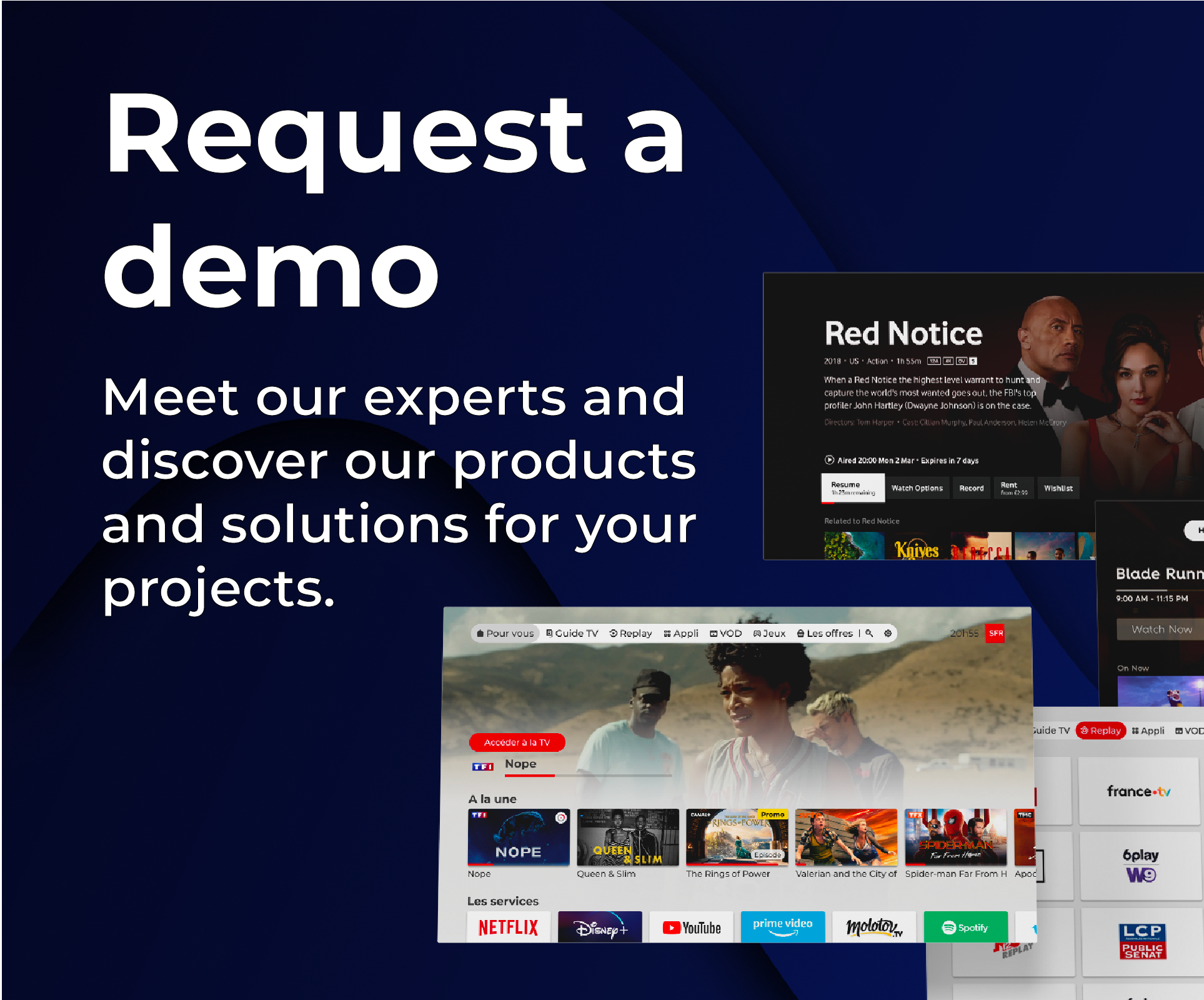The Expanding Complexity of TV App Development
Creating modern video apps isn’t what it used to be. Today’s video services are expected to run seamlessly across smart TVs, streaming sticks, game consoles, set-top boxes, and more, with each platform bringing its own set of quirks, capabilities, and constraints.
This increasing complexity has a direct impact on time-to-market, cost, and operational efficiency. And it’s forcing product and engineering leaders to ask a new question: how do we scale video app development without duplicating effort across every screen?
That’s where development frameworks come in. If you’re hearing a lot of buzz from your tech team about the need for better frameworks, here’s what you need to know.
What Is a TV App Development Framework?
A development framework is a reusable software foundation that provides developers with the core building blocks needed to create apps faster and more efficiently. It typically includes a rendering engine, UI components, development tools, and a way to manage platform differences. This ensures teams don’t have to reinvent the wheel every time they build for a new device.
In the mobile world, frameworks like Flutter (by Google) and React Native (by Meta) have become hugely popular by allowing developers to write code once and deploy to both iOS and Android. But TV is a different story.
Why Most Frameworks Fall Short on the Big Screen
“React and Flutter were originally designed for mobile,” says Julien Tanguy, Head of R&D at Wiztivi. “You can adapt them to TVs, but it’s not easy, and it’s definitely not an ideal solution.”
Unlike smartphones, TVs are pretty low-powered devices with highly specific navigation expectations. There’s no touchscreen. Rendering needs to be lightning fast. Remote controls are the norm. And viewers expect a smooth, lean-back experience that feels native, regardless of whether they’re using an Apple TV, a Samsung Smart TV, or a legacy Linux STB.
While mobile-first frameworks can be extended to support TVs, they often struggle with performance, navigation fidelity, and platform-specific features. As a result, many teams end up creating more complexity simply because they tried to simplify their stack!
Why a TV-Native Framework Makes More Business Sense
When a development framework is purpose-built for TV, such as Wiztivi’s DANA Framework, the benefits go beyond engineering. Instead of building and maintaining separate codebases for every platform, you create once and deploy everywhere: Samsung, LG, Android TV, Apple TV, set-top boxes, and even game consoles.
“If you’re developing natively, you probably need a separate developer for each platform,” Julien explains. “With DANA, you can reduce that to one. Or if you have a team of four working across four platforms, you’re no longer multiplying efforts. You’re aligning them.”
This kind of consolidation translates directly into business value:
- Lower development costs – fewer platform-specific teams to manage
- Faster time-to-market – features are deployed once, not four times
- Consistent UX – maintain parity across devices without redundant work
- Simplified QA – a single codebase means fewer test scenarios
Performance Without Compromise
One common objection to using frameworks is the assumption that performance will suffer, that by adding another layer between the code and the platform, you’ll slow things down. But with DANA, that simply isn’t the case. “We speak directly to the native rendering engines,” says Julien. “So, whether you’re navigating between rails of content or loading visuals, our tests prove the end-user experience is just as smooth as native apps that don’t use a framework”
This approach is particularly valuable on TVs, where low-end hardware and limited processing power mean every millisecond matters. DANA’s lean architecture avoids unnecessary computation (like the screen resizing logic that’s required for mobile phones that tilt, pinch and zoom) and is optimized for TV-specific navigation patterns.
Cross-Platform, Not Cross-Purpose
It’s important to note that DANA isn’t a one-size-fits-all framework. It was never meant for mobile or web. That was a deliberate decision, not an enforced limitation. Rather than stretching a mobile-first framework to fit the big screen, DANA was built from the ground up for large-screen environments. The inverse is also true: you wouldn’t want to stretch a TV-first framework like DANA to suit your mobile apps. This clarity of purpose makes DANA especially appealing for media companies who’ve solved their mobile needs but still face a core UX challenge in TVs and set-top boxes.
That said, Wiztivi supports hybrid strategies too. For companies using React for web or mobile, DANA provides UI and service libraries that can plug into existing stacks. This offers a path to unifying cross-platform services without forcing a complete rebuild.
What About the Risks of a Proprietary Framework?
It’s natural for developers and decision-makers to feel cautious about adopting a framework that isn’t open source, especially when a company like Wiztivi can’t match the size of a giant like Google or Meta. But the benefits often outweigh the concerns.
DANA has been in development for more than 15 years and powers every customer project Wiztivi delivers. A full SaaS model is being launched to give developers instant access to all the tools they need – including build machines, CI/CD support, CLI tooling, and IDE integration. Support, documentation, and a growing internal developer community all reduce the learning curve.
And unlike open-source projects where support is community-driven, DANA comes with real-time help from the people who built it.
Is a TV App Framework Right for You?
If your company only targets one or two platforms, native development might still make sense. But if you're managing multiple apps across smart TVs, STBs, and streaming devices (or you plan to in the future), a specialized TV app development framework can deliver significant returns.
As Julien notes: “The benefits of a framework really start to show from the second platform onward. That’s when you stop duplicating work and start scaling efficiently.”
In an industry where speed, consistency, and platform support can make or break your product roadmap, that kind of efficiency is a huge strategic advantage.
Want to know more?
Curious how this could work in your environment? Book a short intro call with our tech team and see how DANA accelerates cross-platform development — without sacrificing performance.



